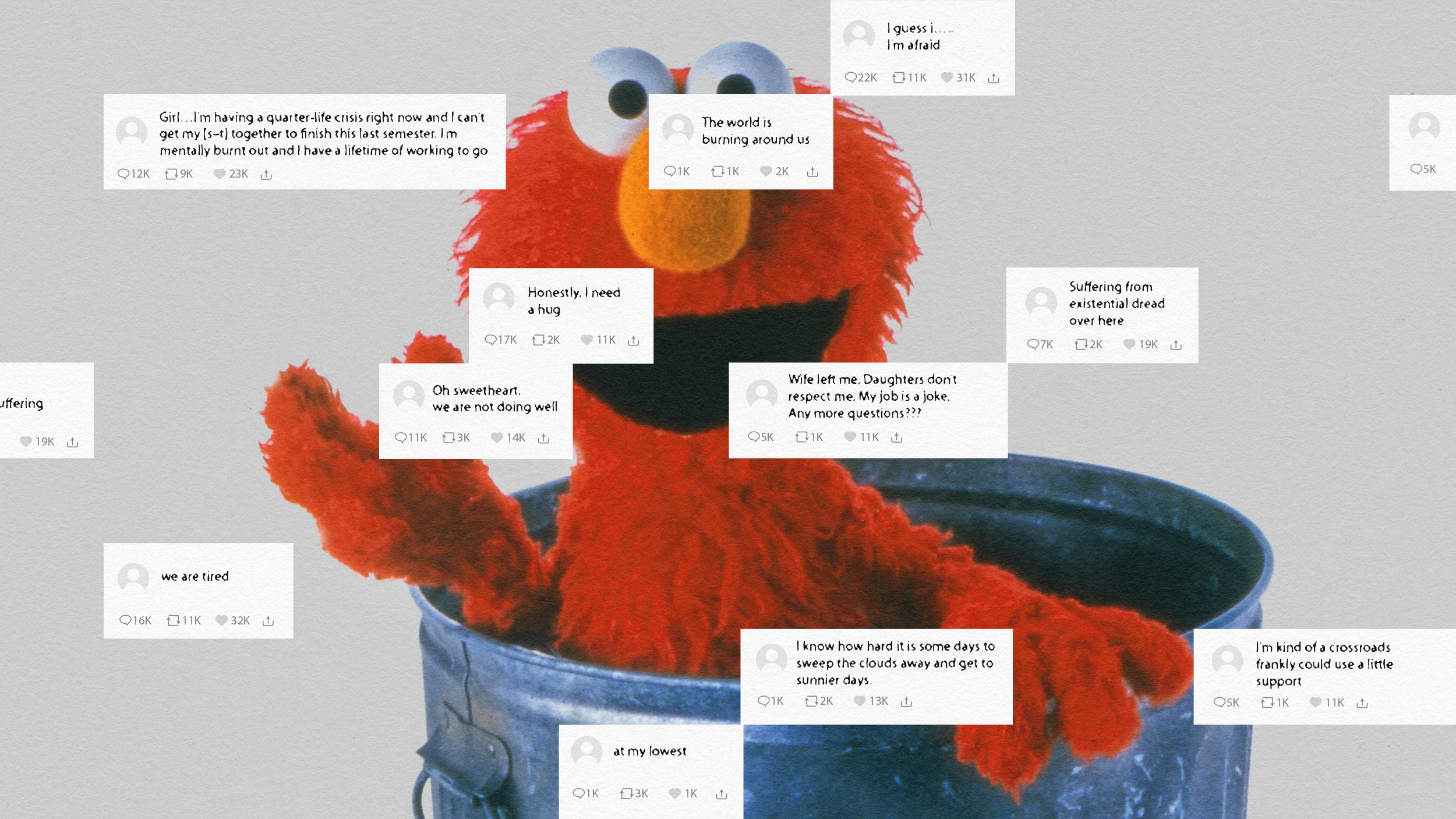Is Technology Uniting or Destroying Us?

Recently I allowed Guy Garcia to strap a Samsung Gear VR around my head so that I could experience the virtual reality addendum to his new novel, Swarm. The term ‘multimedia’ might be antiquated, but seeing his characters spring to life in front of my eyes—behind my eyes, to the side of my eyes, in every direction I turned—conjured the very question at the heart of his book: How do you know when your thoughts are your own?
It’s difficult to discern where reality begins and ends in virtual reality given how immersive the experience is. This question of free will is a constant in an age of neuroscience and technology. We know our decisions are made milliseconds before they arise in consciousness. We also know consciousness is an emergent phenomenon. As Garcia puts it, a synaptic connection alone does not cause awareness, but the interaction of neurochemicals under the right conditions do create the basis for consciousness. Can the same be true of societies? Is there such a thing as autonomy when a collection of individuals are pinballed around the hive mind?
Since Garcia wrote The New Mainstream in 2004 he’s obsessed over the intersection of individual and culture—how individuals change as cultures collide and new forms of expression become available. In 2009 he entertained gender and culture in The Decline of Men; last year he co-authored the bestselling Self Made (with Nely Galán), which focused on female entrepreneurship and how that’s changing culture. Every book offers a big picture view of how cultures transform and are transformed.
Swarm is no different, though this time Garcia investigates technology, using the imagery of a locust swarm. He explains:
Locust swarms are not a separate species from grasshoppers, but just an altered state of grasshoppers due to serotonin entering their brain usually triggered by famine and overcrowding. There’s a bio-morphosis where the grasshoppers actually change into locusts and start to move, not necessarily because they have a goal but because the locusts are sexually aggressive, physically aggressive, and cannibalistic. They’re worried that the locusts behind them will start to eat them, and they take off and ravage entire forests and farms and anything else that gets in their way.
Which is effectively how Garcia views social media. In Swarm an Austin-based hacker, Tom Ayana, becomes enthralled by the potential flash mobs have for social transformation. He keeps his secret identity—Swarm—under wraps from everyone, including his best friend and burgeoning DJ, Xander Smith, who he helps by boosting his social media cred. Smith blows up and is booked on the biggest touring circuit. When Ayana is handed a powerful zeph.r code that cause humans to become a zombie swarm, he decides to test it out as Smith’s VJ.
The code is a work in progress sourced from the Department of Defense; the stealers nominate Swarm as the perfect candidate to test it out publicly given his track record in flash mobbery. Smith and Ayana’s final performance s in a Pennsylvania field. Swarm dispatches his zombie army to march on Washington DC. There might not be any cannibalism, though sexual and physical aggression is a hallmark of this epic journey.
When Garcia began his novel he figured it would be 30 percent fact, 70 perfect fiction. The reverse ended up closer to the truth—he calls it ‘science faction.’ Underlying the novel is a timely theme: In an age of alternative facts, how are we able to wade through a swarm of disinformation to know what’s actually true?
We are addicted to a sense of individual expression and convenience that is increasingly a trade-off to autonomy and our ability to resist. We’re giving up those tools and even willfully denying facts as one of the things that determine their opinions and attitudes and actions. The real nightmare is once people can’t tell the difference between facts and non-facts—or not even care because there’s so many alternate realities to choose from.
One of the great promises of technology is freedom. By observing your purchasing and liking habits the algorithms of your browser engage in targeted marketing, influence analytic feeds, and filter out bad news while keeping you engaged in self-designed content. Incredibly, Garcia notes, we grow hysterical over the prospect of the government watching us through our televisions (and microwaves), but we often willingly surrender our identity to Google, Apple, and marketing agencies. Whereas we see freedom of expression, Big Data observes predictable patterns. As Garcia says,
There’s a religion of individuality but the god is a mass.
The selfies and self-declarations we feel as a unique firing of neurons is really a “single motion at a meta level.” It might feel special when we receive an incredible promotion at our favorite store or the Amazon bot nails a book recommendation, but it’s also blurring the line between fact and fantasy. As technology becomes more swarm-like, Garcia wonders, how we will know whether something is good or bad?
This becomes especially daunting as computers take on more biological qualities. Drones, bombs, and computers are assuming “biomorphic swarming capabilities,” and so to address this question we need to maintain control of our machines. As Garcia frames it:
Why do we have to leave it to the machines to decide our evolution into the next phase of humanity? Maybe we have the biological triggers within us because we’re designed to evolve.
Like many of us drifting through a sea of social media, Swarm is more fascinated by the possibilities than in expressing an exact goal. That’s not a glitch, but the point. The zeph.r code is beyond his understanding because once released it generates a hive mind. The mechanisms of control are uncertain, just as the locust swam, in its chemical fury, destroys not out of pleasure but necessity. Though we contemplate an ethics of virtual reality we won’t know what that entails until we arrive. Garcia concludes,
The only way we can answer that question is to get through to the other side of the question.
In India the supreme force is a trinity comprised of Brahma, the creator, Vishnu, the preserver, and Shiva, the destroyer. In Hindu thought the universe is a series of checks and balances beyond the simple ethics of good and bad. Shiva, the ascetic who hangs out at funerary grounds, is just as necessary as the creation and preservation of life.
In this system all is transient. The promise of AI and virtual reality might be to stretch that process out, but Garcia is right: we’re the creators of these technologies, yet we’re also the products of nature, which has its own rules that often conflict with the morals we’ve decided upon as cultures. The relativity of ethics is ultimately beside the point.
Is technology uniting or dividing us? The answer is yes. Facing futility might be our greatest frustration, yet it also holds the keys to any sense of liberation we hope to feel while alive. If you’re not part of the swarm you’ll likely be consumed by it.
—
Derek’s next book, Whole Motion: Training Your Brain and Body For Optimal Health, will be published on 7/4/17 by Carrel/Skyhorse Publishing. He is based in Los Angeles. Stay in touch on Facebook and Twitter.





